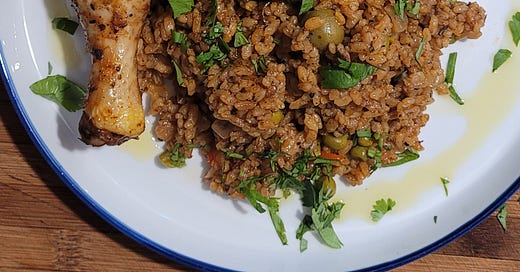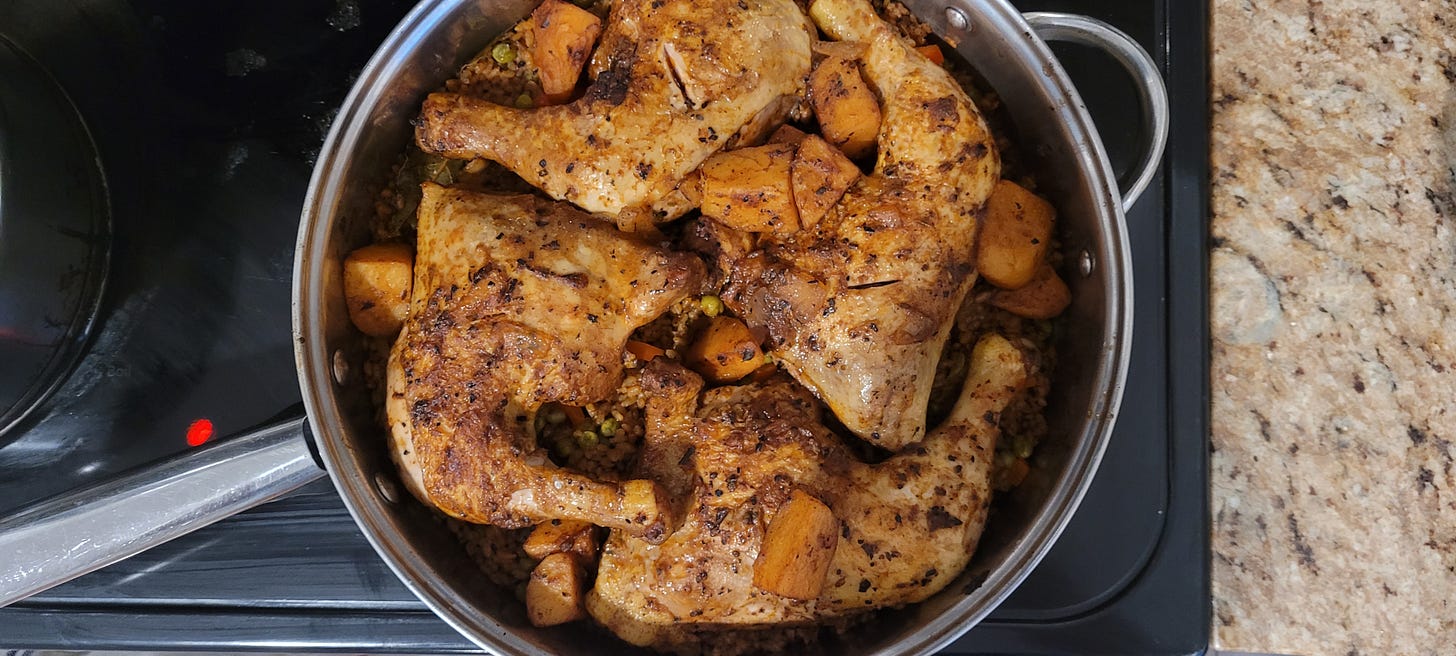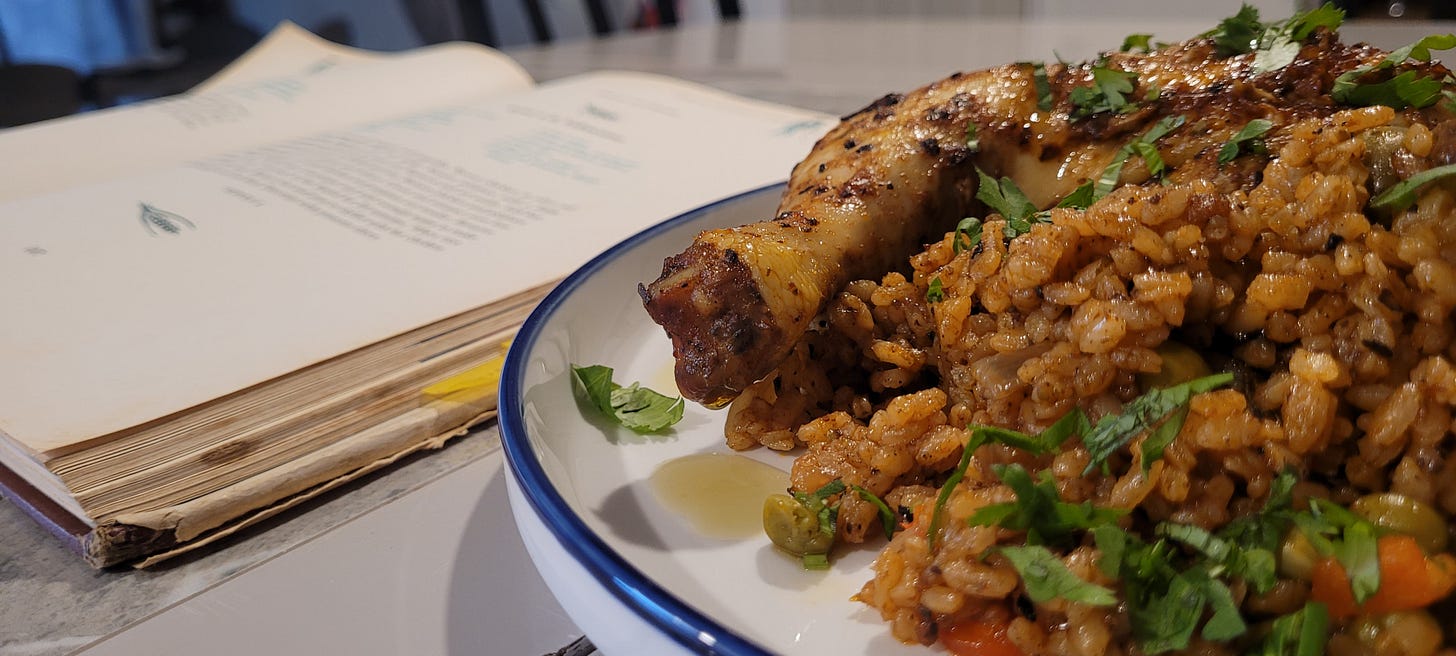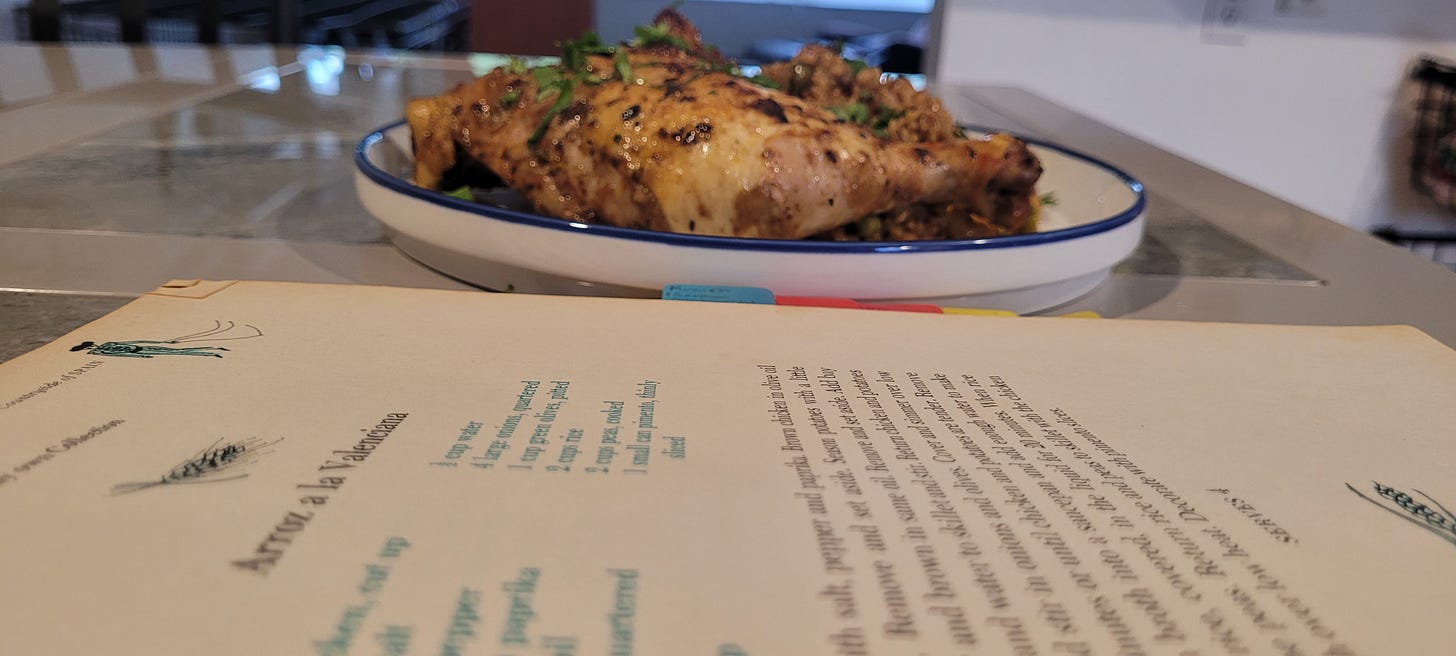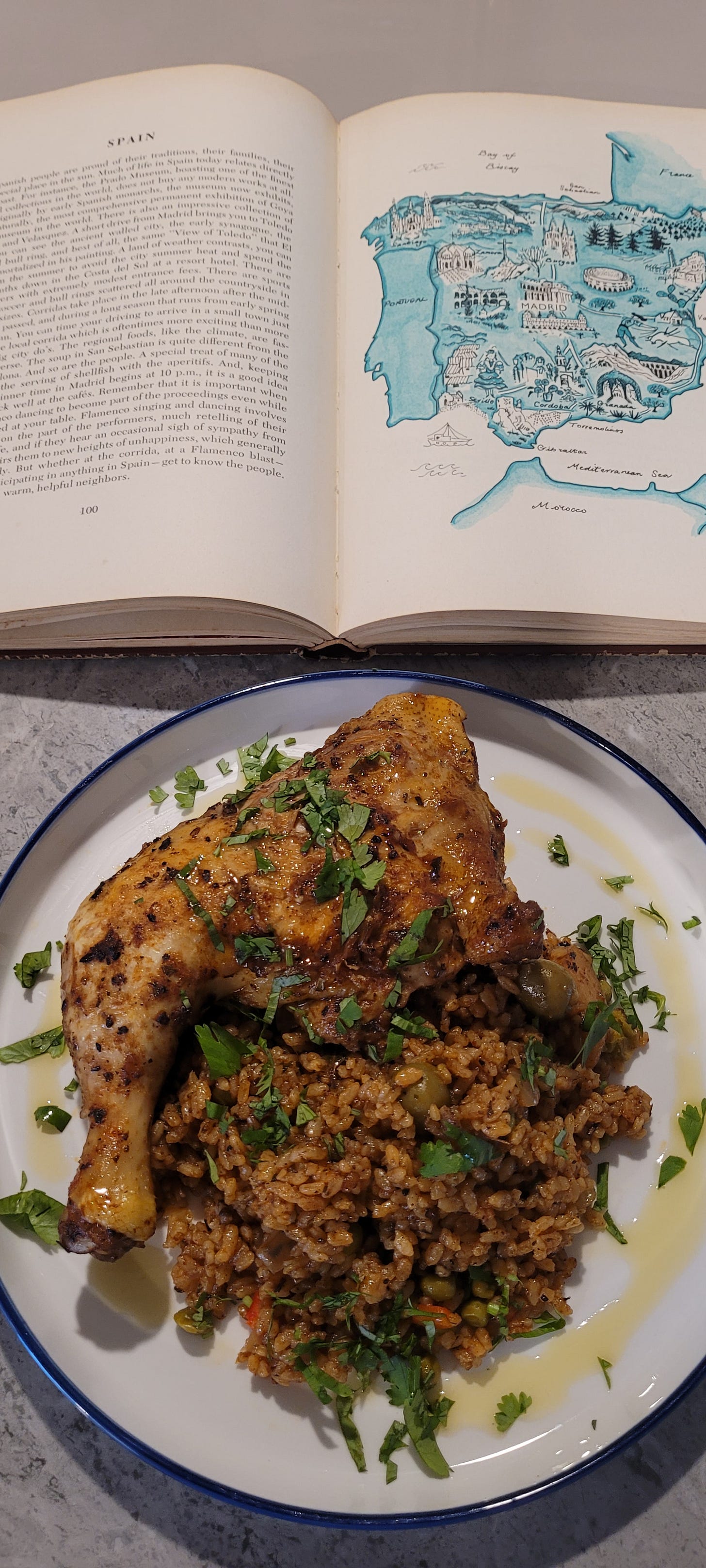Arroz a la Valenciana (Recipe)
Inspired and adapted from the book A Short Drive in the Country by Sandy Lesberg.
Hi, welcome to another publication in the section It's Food o’ Clock, where I share my passion for food and cooking. Today is all about a Spanish dish from Valencia that (some say) originated in the eighteenth century. I love Spanish food. This post also has a music element to give the recipe a nice vibe (hit play, adjust the volume to your taste, and read).Venga. Make sure to hit like, leave a comment, share this post, and if you want to get notifications of my newsletter and podcast, subscribe. It’s free!
Music by Aliabbas Abasov from Pixabay
Rice and chicken are a big staple in my house. Although we've been making sure to cook other things to add not just better nutrition but a variety of flavors to our meals, at some point, once or twice a week, they (rice and chicken) are the main thing. They are easy, quick, and yield enough for four months without breaking the bank.
Typically, we make a simple white rice, or one of my wife's favorites, rice with corn (Arroz con Maíz). Occasionally there is Arroz con Pollo, or con cebolla (Rice with Chicken, or with Onions). But this week I wanted to make it differently, and I had my eye on a recipe from one of my books (A Short Drive in the Country). I have been wanting to make this recipe for a while.
The book
Often, I grab this old and rusty book to fantasize about making a banquet with all those recipes from yesteryear. I purchased it years ago at a vintage store, and what attracted me was its looks. Or better said, its character.
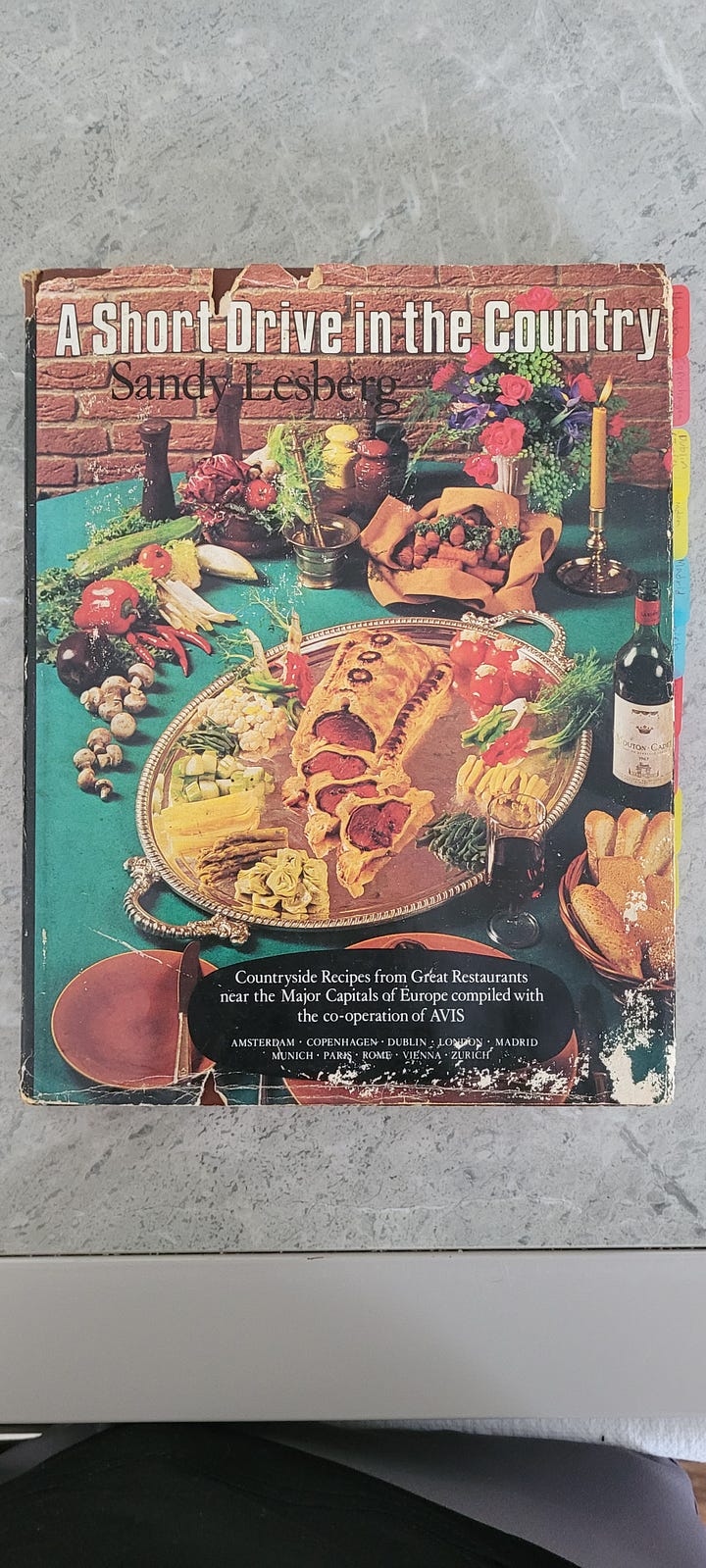
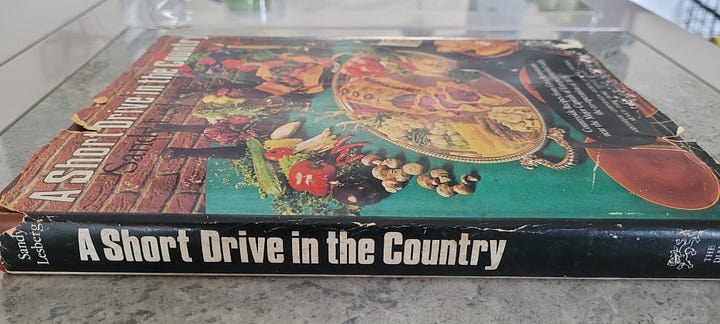
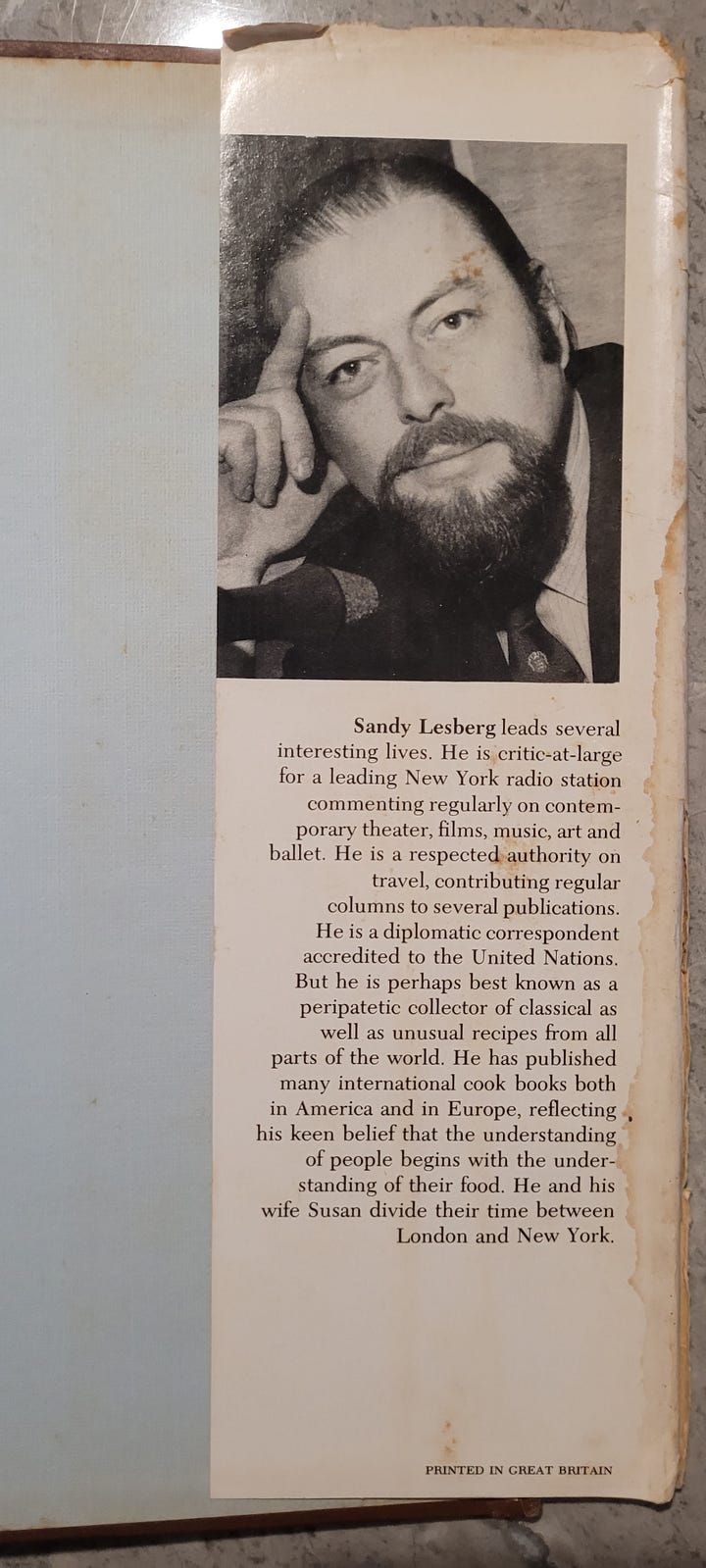
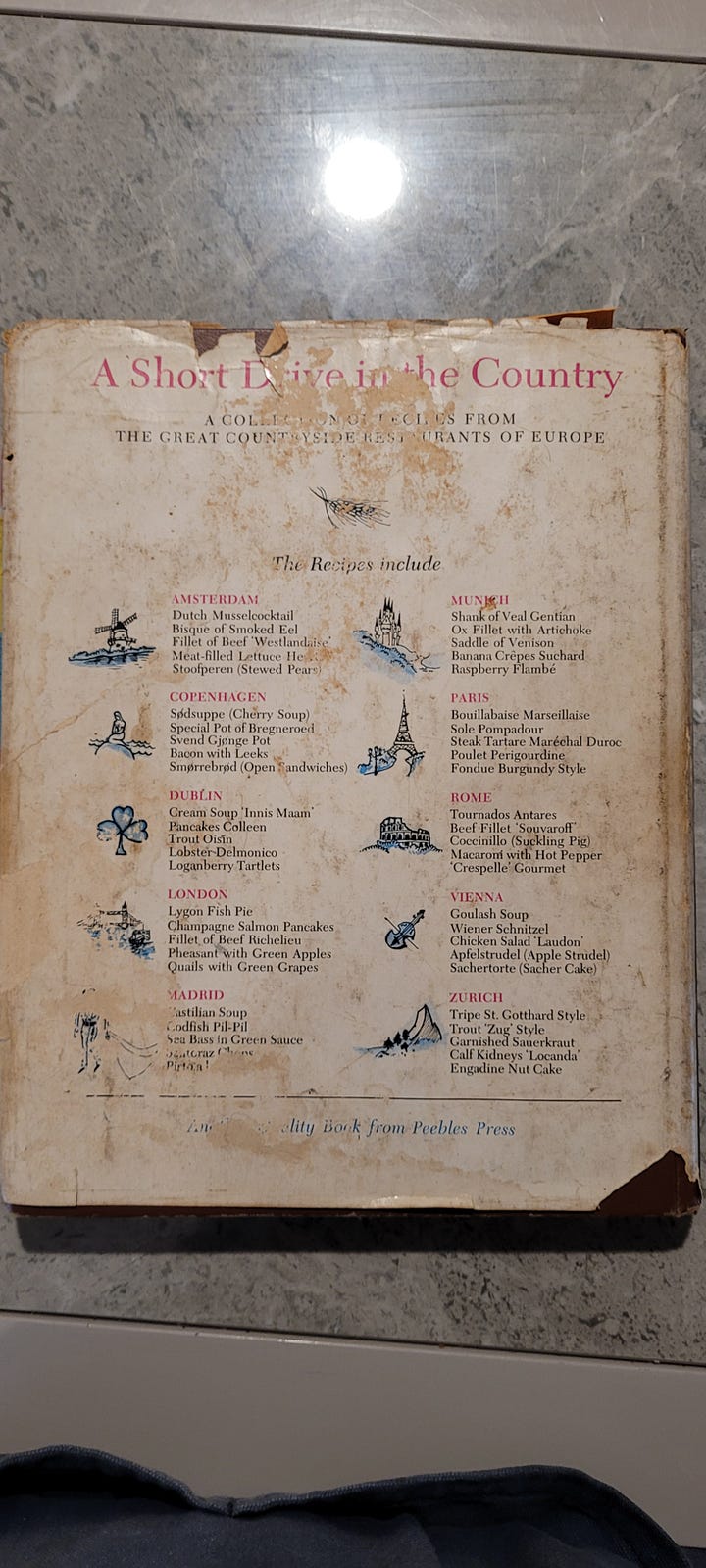
The recipe (with my changes and additions)
Arroz a la Valenciana is a recipe I wanted to make for a few reasons. Sure, it was something different within the same ingredients that we generally have at home, but it was more than that. It was the memory of childhood, the fact that I am a romantic for old recipes, and the nostalgic feeling of cooking something from Spain. And they say every Puerto Rican has some Spanish blood running in their veins so there is that ancestral connection as well.
The recipe is simple, and it calls for ingredients that are not hard to find, but that at the end pack a good punch of flavor. Of course, I added my own touch with other flavors from my pantry.
Ingredients
The original ingredients (from the book) yields for four people and call for:
One entire chicken, cut up into pieces. I decided to use four (4) leg quarters because they were in sale, and because they saved me time from butchering.
Two cups of rice. It doesn't specify what kind of rice but I used medium grain. I like to wash my rice for the texture, but you can also use it as it comes.
One cup of Ketchup. I decided to use a combination of ketchup and low sodium tomato sauce (half a cup each). I was running down on ketchup.
A white onion (Squared). While the recipe asked to use the entire onion in one of the steps, I decided to use half on one step and half on another. Instead of squaring it, I cut it into big dice.
Pitted olives. I used pickled ones that come stuffed with red pepper. I also used about a tablespoon of their juice, which gives an amazing flavor to sauces.
Paprika. Next time I will be using smoked paprika.
A tablespoon of salt, but you can use it to your taste.
Half a tablespoon of pepper.
One quarter cup of olive oil. I used almost twice that amount.
Five Bay Leaves. These bring me to childhood and the memory of my mom’s cooking.
Four potatoes. I only used two to give the dish body and honor the recipe.
Water (half a cup), and then some.
Two cups of cooked peas. Nothing that a can can’t solve. I used a small can.
A small can of red pepper, sliced in thin strips.
Procedure
The recipe asks that you season the chicken well with salt, pepper, and paprika. I also added a bunch of dried oregano, and a sprinkle of garlic salt. In a deep skillet you must brown the chicken (in the olive oil). This process is important for both the final visual of the plate and the flavor itself. Once the chicken is browned take it out of the skillet and leave on the side. Do not clean the skillet.
Then you season the potatoes with salt (just a sprinkle) and put them in the skillet where you browned the chicken. I added a bit of Complete Seasoning and some dried basil and then I made sure that the potatoes had a nice golden color but were not cooked. Once ready, set aside.
In the same skillet add the bay leaves, the ketchup, and the half cup of water. Stir the liquid to infuse all the flavors (including the burnt oil and seasoning from the previous two steps).
Bring the chicken and the potatoes back to the skillet, which is already waiting with the sauce, and stir in half of the diced onion, olives, and the olive juice (trust me!). Let cook at low heat for around 20 minutes or until the chicken is fully cooked.
The potatoes will be tender by then. I occasionally stirred the ingredients carefully to avoid them sticking to the bottom, which would have caused the skin to break and the potatoes to break.
Take the skillet off the fire. Take the potatoes and the chicken out of the skillet and set them apart. This is where that “then some” of water comes into play. Pour the sauce from the skillet into a heat resistance measuring cup and add enough water to get to a total of four cups of liquid. I dropped in half an envelope of Sazon Goya to give it more flavor. You are using the skillet again later, so don't wash it.
In a pan, pour the liquid mix, and add the rice and simmer (cover for about 20 minutes or until the liquid is evaporated). When the rice is cooked stir in the peas and mix well. Taste and adjust the seasoning if you need to.
Pour the rice in the skillet you were using earlier and try to level it a bit. Cover the rice with the chicken pieces and the potatoes, and warm over low heat.
Instead of heating it on the stove I placed it at 350F in the oven (covered) for about 15 minutes. Then I removed the cover and cooked it in Low Broil for about five minutes.
When I served it, I garnished it with chopped cilantro and a nice drizzle of olive oil.
To say it came out good would be an understatement. It was a combination of memorable colors, smells, flavors, taste, texture, and imagination. I was transported to childhood but at the same time the meal took me to Spain (where I’ve never been), to a Tasca kind of restaurant, with flamenco on the background and the legs of jamon hanging from the ceiling. It reminded me of a restaurant called La Rosa de Triana in San Juan, Puerto Rico. ¡Muy bueno!
Here are some pictures of how the meal came out
Whenever I get inspired by a book, I like to take pictures of the plate, alongside it, to honor the recipe. A way of telling the book (and the soul of the author), “Look, you inspired this!”
Though I wonder how many souls must have been angered by me changing their creations.
Arroz a la Valenciana is a meal worth trying. Give this recipe a try and let me know how it came out.

